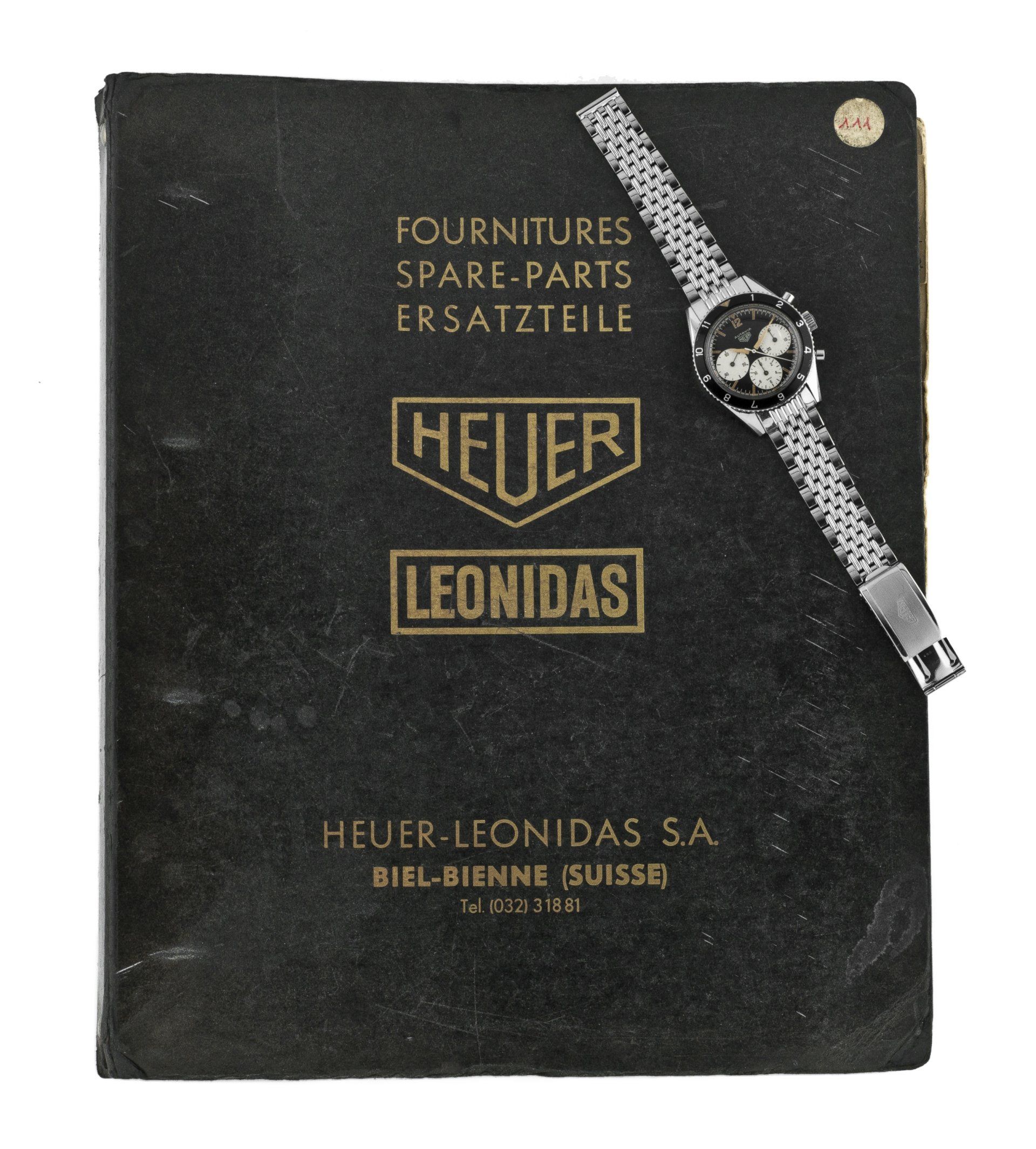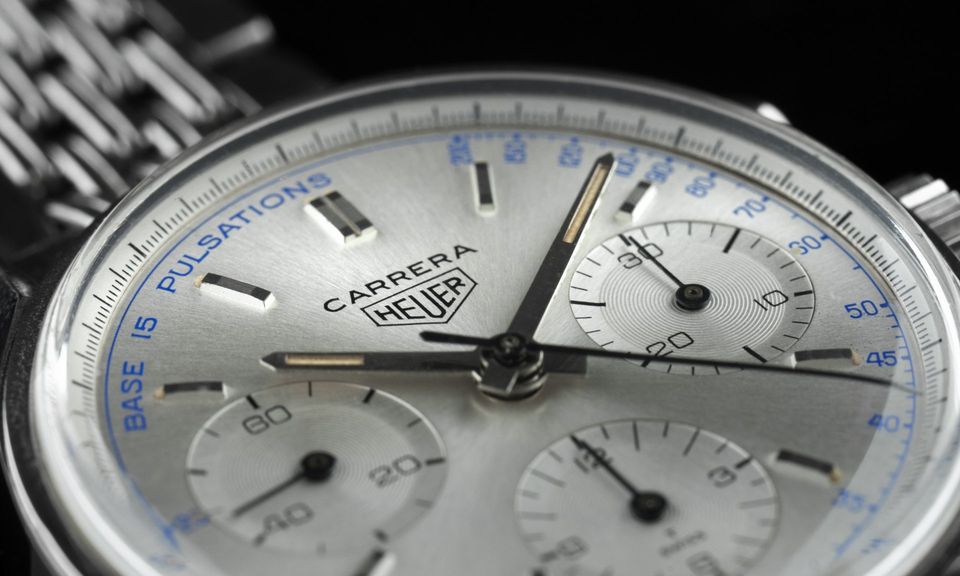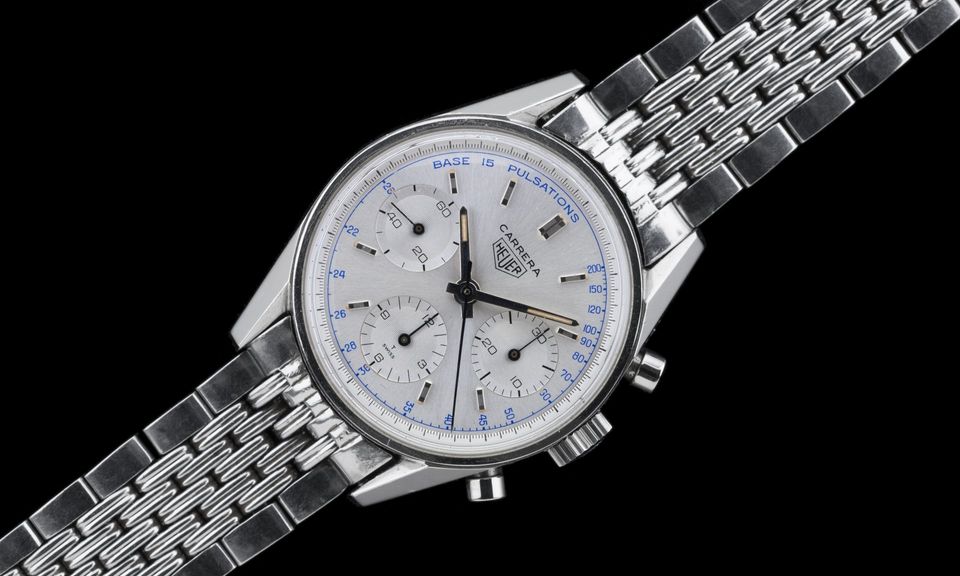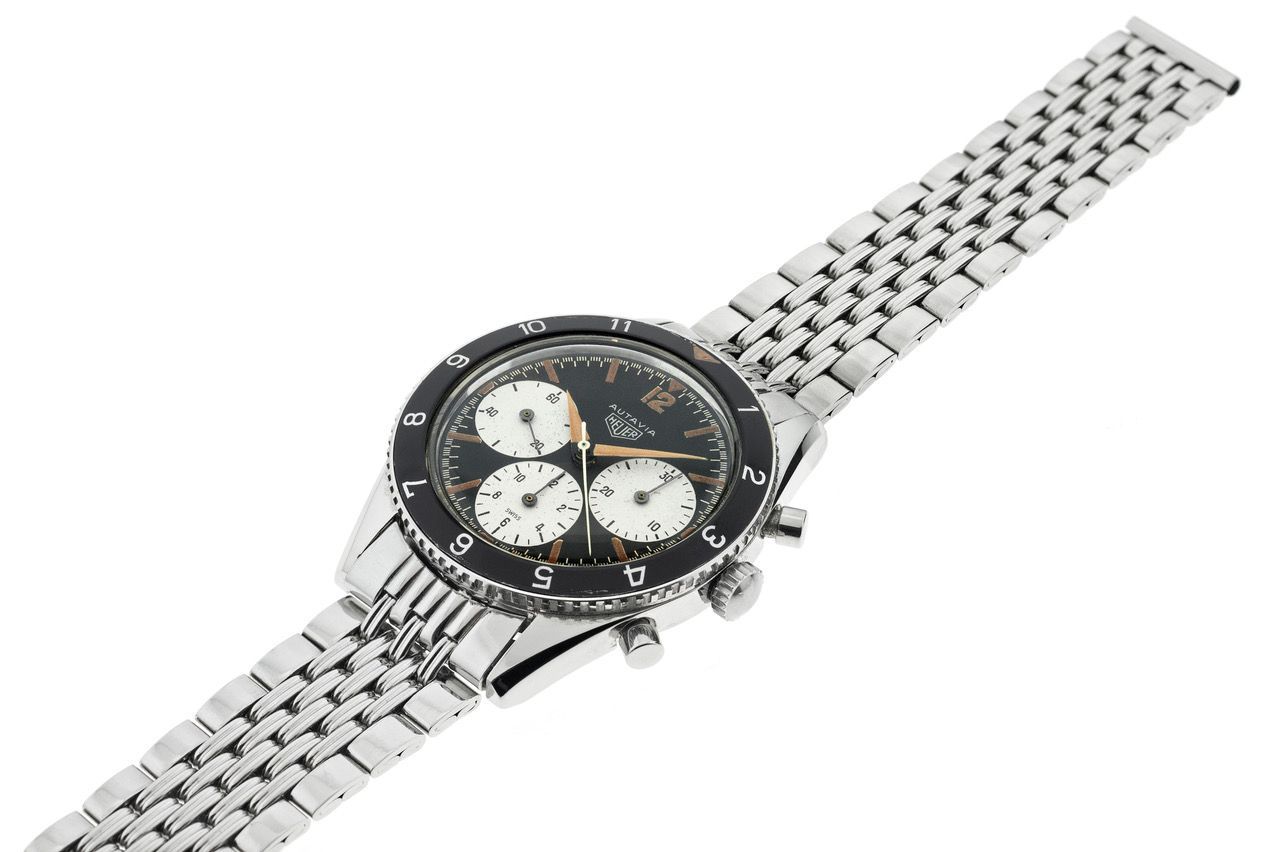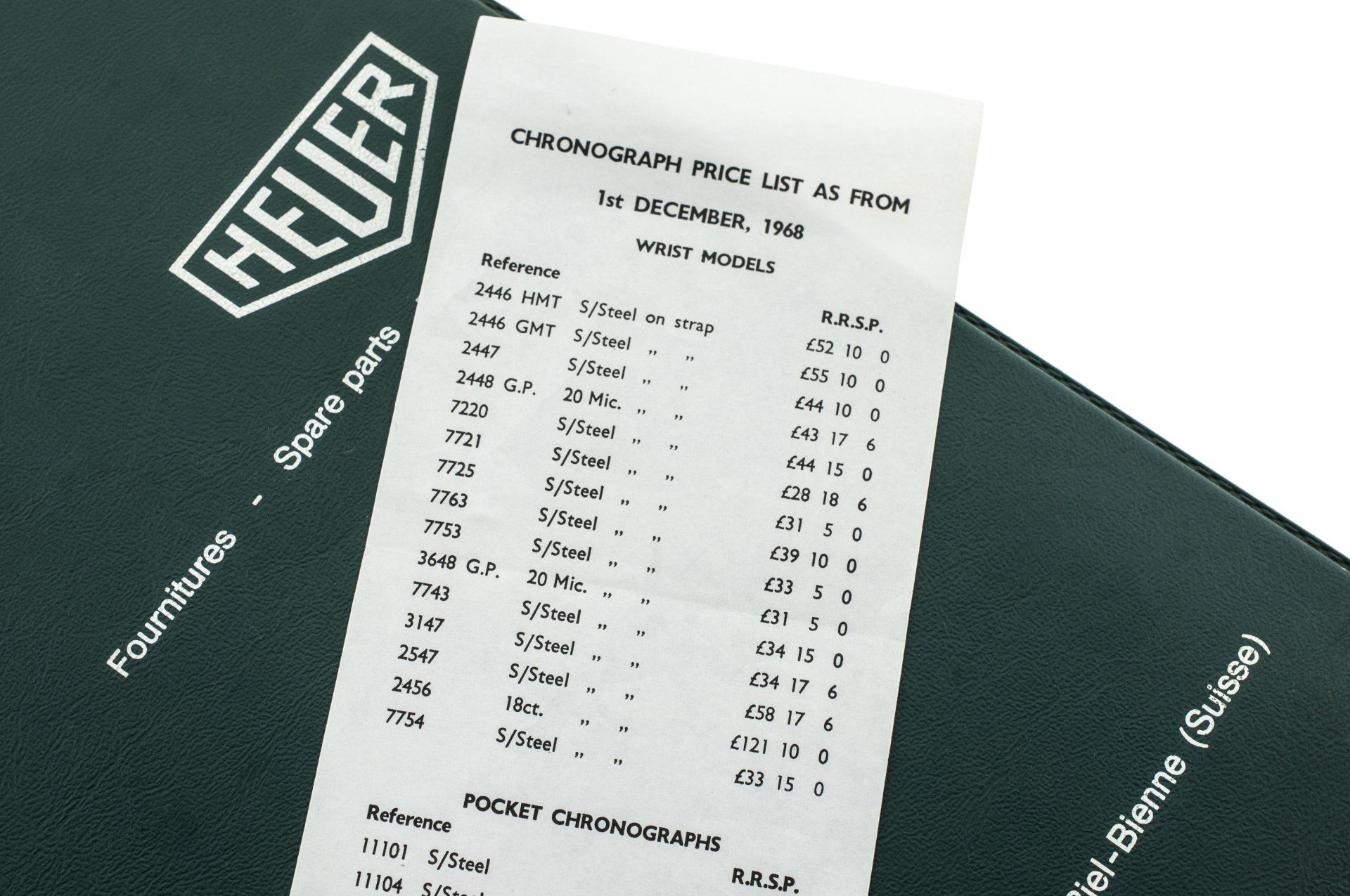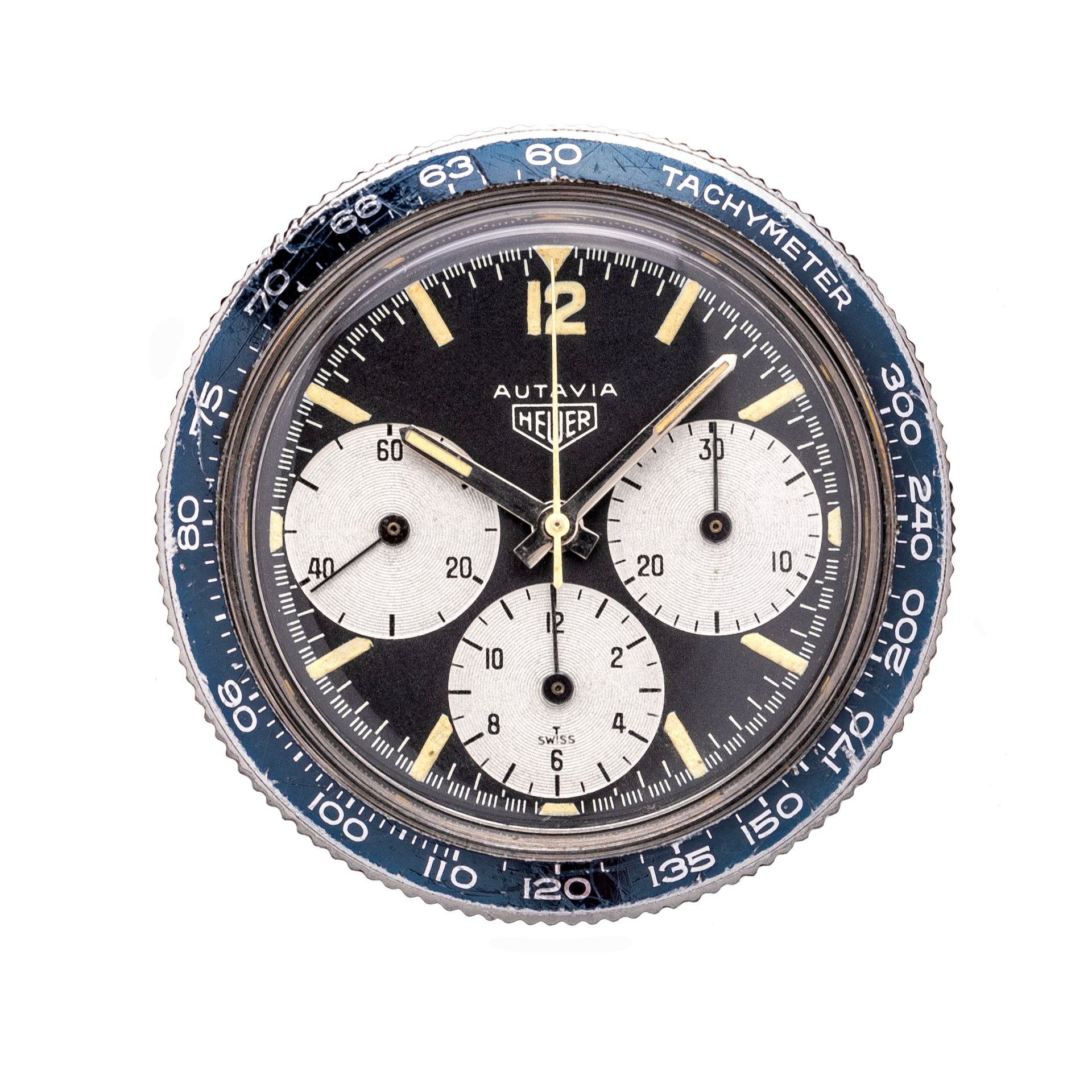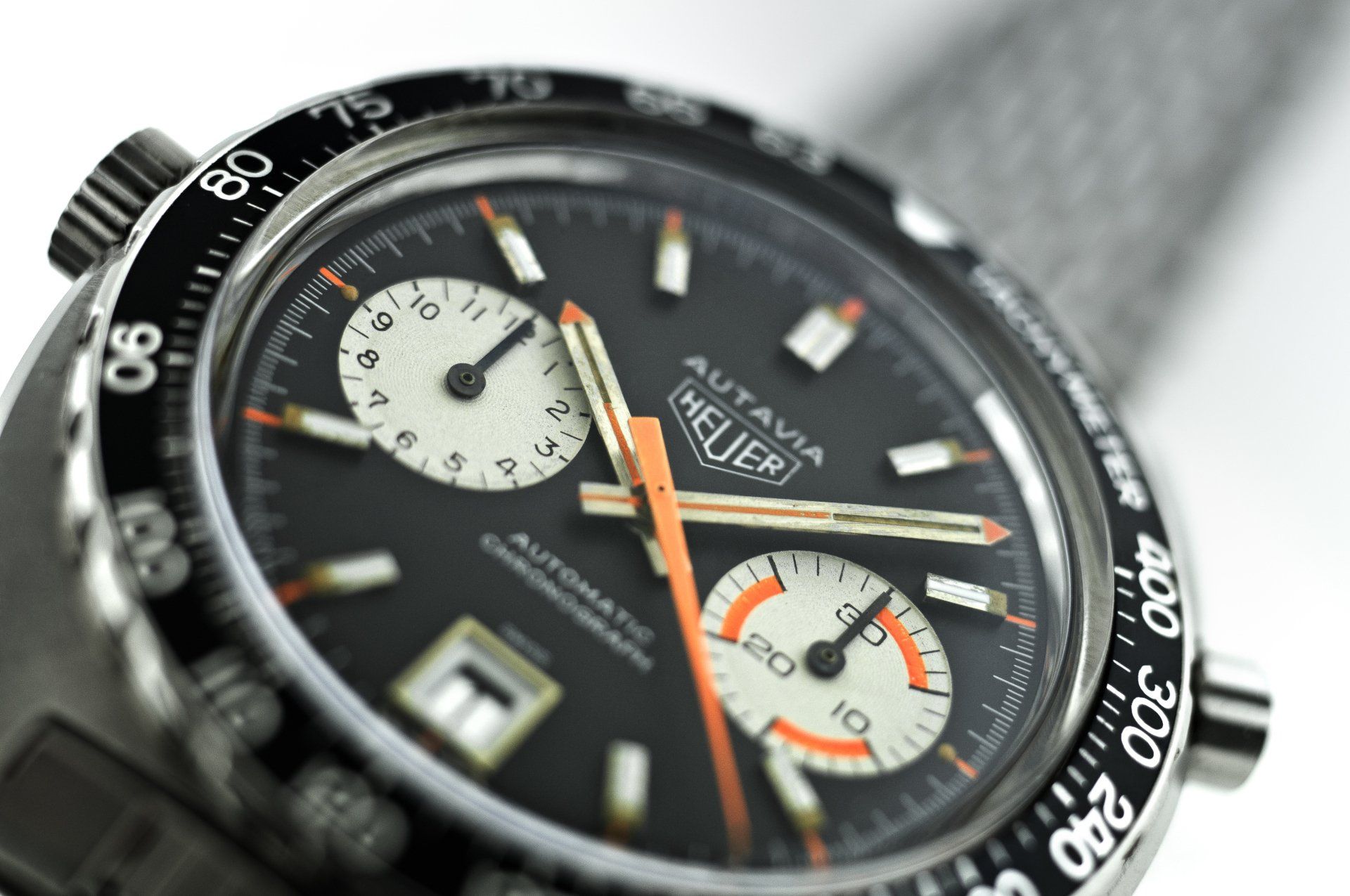The Heuer Carrera 2447P for Pulsation
Both rare and beautiful the vintage Heuer Carrera 2447 Pulsation...
If you search for and read about the Rolex Daytona 6239 "Doctor" on the internet you will find out two things. First, there are similarities between the 2447P Carrera and the Daytona with regards to dial printing, unsurprising as both dials were made by Singer. Second, they are both seriously rare watches, with fewer than ten of each reference observed in the market over the past 10-15 years.
Buy The Heuer Carrera Book
The facts on the Pulsation Carrera 2447 are thin on the ground and the truth is that we do not know much about it, but we do know it was by far the rarest scale dial offered in the 1960s Carrera range. Whilst the plain, tachymeter and decimal dials are very well observed and fairly common, the pulsation dial for measuring heart rate doesn't seem to be an option that made it onto the price lists, and certainly never appeared in a catalogue. This leads us to the conclusion that it was a special order aimed at the medical profession (like the 2447 Yachting dial for the yachting community).
When in use, the owner would start the chronograph function on the first heartbeat, and stop it based on the number of heartbeats counted as indicated on the scale, in this particular example 15 (hence base 15). The stopped chronograph hand would then indicate the exact number of heart beats per minute. Like all the scale dial Carrera, the hour and minute hands should be the shorter versions, therefore falling short of the scale (although inevitably some may have been changed at service). When you see the standard longer hands mounted with scale dials, you can immediately see that this compromises the design and was not meant to be. Although the Carrera is not a contrasting dial like the Daytona, it actually hangs together better as a design in my opinion. Certainly when compared to the Rolex version that sold with the red Daytona text (opposed to the version without the Daytona text) on the dial which doesn't visually hang together so well. Also the dial printing appears stronger on the Carrera and that allows the beautiful blue print to really "pop" and stand out more on the dial.
When we come to values for this watch it is a very hard thing to predict because the few exceptional examples we have seen have only ever traded between collectors. For comparisons sake the Rolex Daytona versions have sold in the past few years for between 700,000 - 1,000,000CHF, which is a multiple of at least 10-15 times a standard 6239 variant. The reality is that we will likely have to wait for an example to come up for sale at a top auction to find out exactly what one may be worth, given the wider audience that entails, but I imagine the very best could be circa £20k+.
Talking of auctions, they have been pretty barren places of late to search for the very best vintage Heuers, (apart from the odd gem like the Sothebys 2446 A&F Seafarer this month) with often average, doctored and/or incorrect pieces being sold. The top collectors are keeping hold of their best examples, rather than take a chance on the block. They know how rare some of our grails are and how few have been found, therefore realise that once gone, you need more than money to buy some of them back. I continue to believe that the Heuer collector market, especially for the rarest and best examples is still in its infancy, and could perhaps be described as a little "green" especially so when compared to the likes of Omega and the highly "organised" Rolex market! Of course only time will tell...
To read more about the vintage Heuer Carrera, click on the button below to check out the Heuer Carrera 1963-85 chronograph book.
Note: Please do not reproduce these images without permission.
